Types of Drones: Classifications, Uses & Learning Guide for You
- Vikrant Patil
- Aug 2
- 5 min read
Drones are no longer just cool gadgets; they are essential tools in industries like filmmaking, agriculture, disaster relief, and even STEM education.
If you’re a student, parent, or school, understanding different types of drones can help you choose the right one for learning, creativity, or career preparation.
Table of Contents
What is a drone?
A drone is an unmanned aircraft capable of being operated remotely or autonomously with onboard systems.

Also known as:
UAV – Unmanned Aerial Vehicle
UAS – Unmanned Aircraft System (includes the drone, controller, and support equipment)
Every drone is made up of essential parts that work together for stable flight and control.
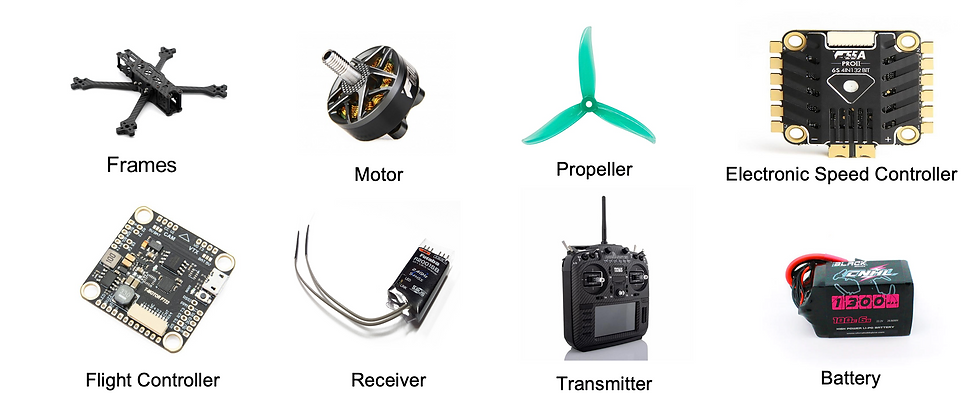
Frame
The main body structure that holds all components together.
Motors
Provide the thrust needed for lift and movement.
ESC (Electronic Speed Controller)
Controls the speed of each motor.
Flight Controller (FC)
The brain of the drone that manages stability, sensors, and commands.
Receiver
Receives control signals from the transmitter.
Transmitter (Remote Controller)
The handheld device used by the pilot to control the drone.
Battery
Powers the drone and its components.
Propellers
Convert motor rotation into lift, allowing the drone to fly.
💡 Pro Tip: In our Free Drone L1 Course, students learn how each of these components works and how to assemble them into a functioning drone.
Applications of Drones
Drones are transforming industries and education:
STEM Learning
Hands-on learning with drones helps students understand robotics, electronics, and coding in a fun and engaging way.
Applications:
School STEM labs and innovation clubs.
Building and programming drones for competitions.
Learning aerodynamics and flight principles.
Photography & Videography
Creative aerial shots are no longer just for professionals — students can now capture them too.
Applications:
Documenting school events, science fairs, and sports.
Creating aerial footage for geography or environment projects.
Learning digital content creation and storytelling.
Agriculture
Drones are helping farmers and researchers monitor and manage crops.
Applications:
Crop health analysis using aerial images.
Spraying fertilizers and pesticides efficiently.
Research projects on sustainable farming.
Security & Surveillance
Drones provide a bird’s-eye view for monitoring areas safely.
Applications:
School security monitoring during events.
Surveying community spaces for safety.
Wildlife conservation surveillance projects.
Disaster Relief
In emergencies, drones can be life-savers.
Applications:
Delivering medicines or supplies to flood-affected areas.
Aerial search and rescue missions.
Assessing disaster damage quickly.
Environmental Studies
Students can use drones for environmental awareness and conservation.
Applications:
Tracking wildlife movement for research.
Measuring pollution in rivers or lakes.
Monitoring deforestation and land changes.
📌 Did You Know?
Drones can plant 100,000+ trees per day using aerial seeding technology.
Learn About Drones for Free
At GDIOT Innovations, we offer a Free Drone L1 Course where you’ll learn:
Drone basics & safety rules
Types of drones & their uses
Hands-on flying tips
Real-world applications
🎯 Perfect for students, parents, and schools!
Click here to join the Free Drone L1 Course and start your drone journey today.
Drone Classification Based on Rotors
Rotor-based drones use spinning blades to generate lift. Here’s a breakdown:
1. Bi-Rotor Drones
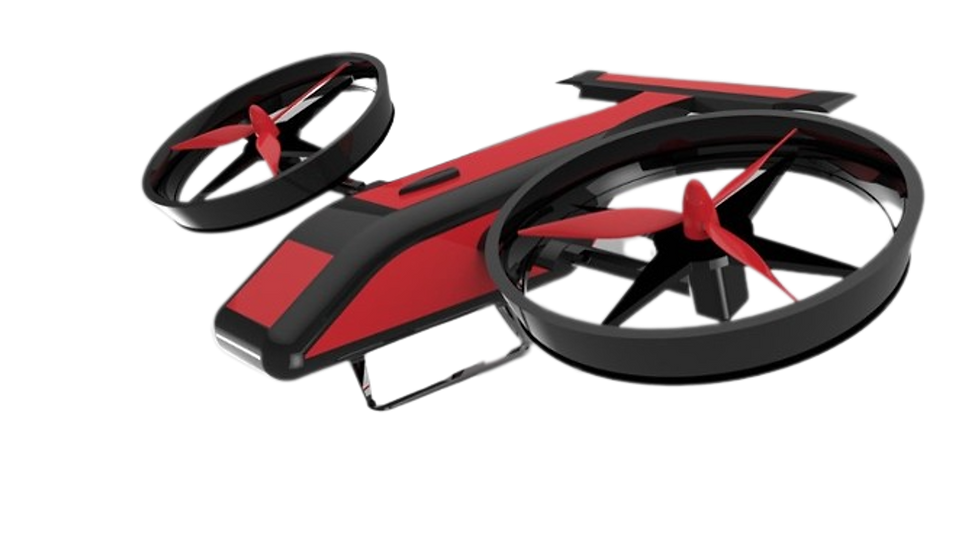
Description: Two main rotors
Use Case: Rare, mostly experimental
Note: Less stable than other rotor types
2. Tri-Rotor Drones

Description: Three rotors in a triangular layout
Use Case: Some hobby and research projects
Drawback: Not very stable compared to quadcopters
3. Quadcopters (4 Rotors)
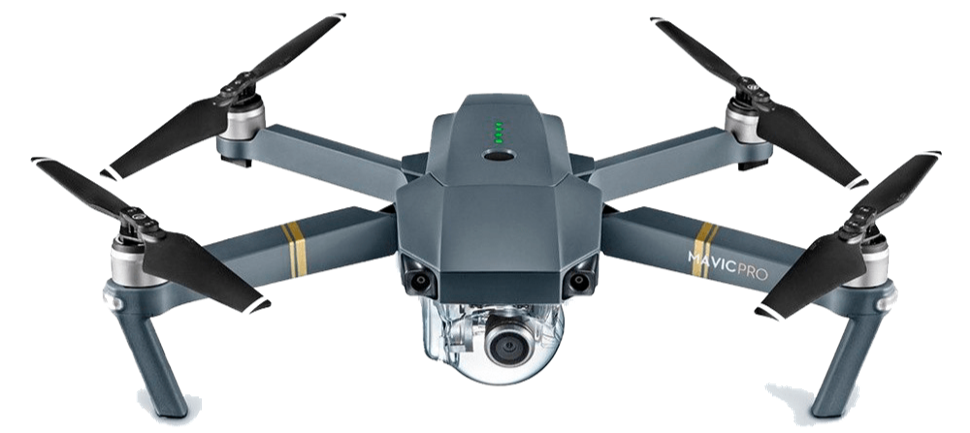
Description: Most common drone for beginners
Use Case: Education, aerial photography, racing
Advantage: Very stable, easy to fly
4. Hexacopters (6 Rotors)
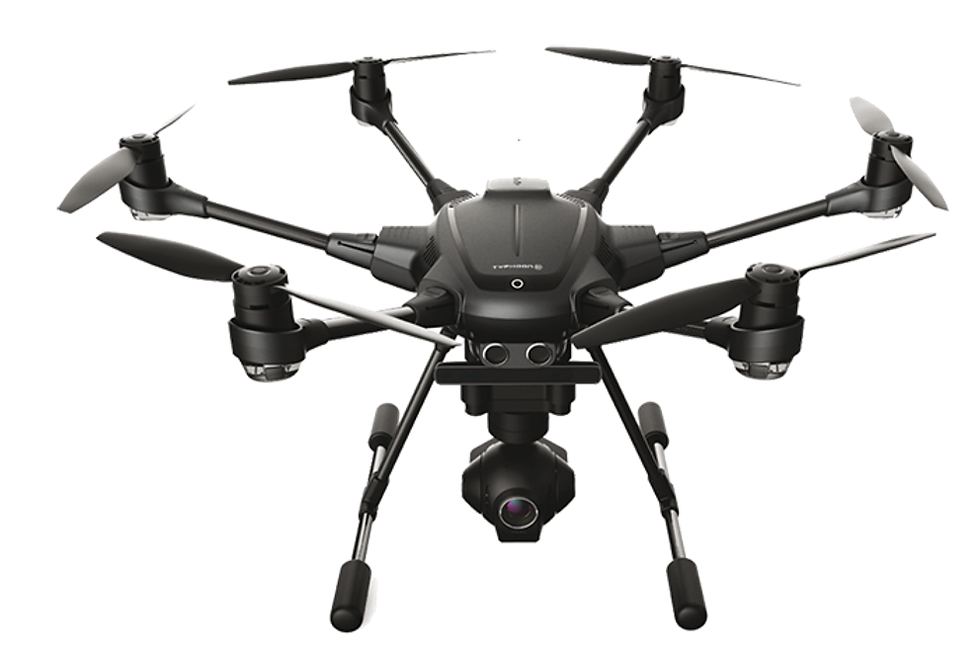
Description: Six rotors for better stability and payload
Use Case: Mapping, industrial inspections
Advantage: Can fly even if one motor fails
5. Octocopters (8 Rotors)

Description: Heavy-duty professional drones
Use Case: Filmmaking, heavy lifting
Advantage: Maximum stability and lifting capacity
6. Fixed-Wing Drones
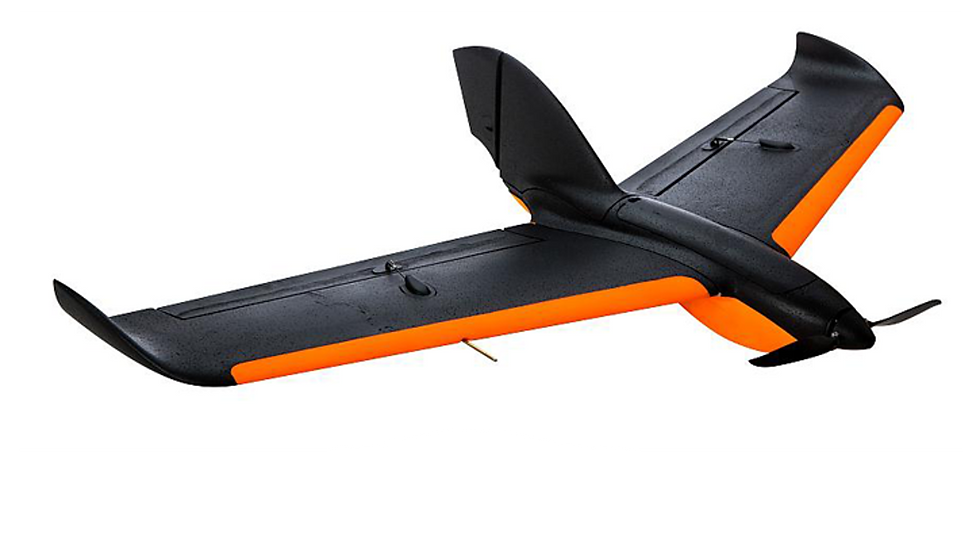
Fixed-wing drones look and fly like miniature airplanes. Instead of using spinning rotors to stay in the air, they rely on wings to generate lift as they move forward. This design makes them much more efficient than rotor-based drones when it comes to long-distance flying.
Unlike quadcopters or hexacopters, fixed-wing drones cannot hover in one place — they must keep moving forward to stay airborne. This makes them ideal for covering large areas in a single flight.
Advantages:
Long flight time — often 1–2 hours on a single battery.
Covers large distances quickly, perfect for surveying big areas.
Energy efficient compared to multi-rotor drones.
Limitations:
Cannot hover in place.
Requires a runway, catapult, or hand-launch for take-off.
More challenging to operate for beginners.
Use Cases:
Mapping & Surveying – Capturing large-scale land data for agriculture, construction, and research.
Environmental Monitoring – Tracking wildlife, studying forests, and monitoring coastal areas.
Disaster Assessment – Quickly assessing damage after floods, earthquakes, or wildfires.
Military Reconnaissance – Long-distance surveillance and intelligence gathering.
7. VTOL Drones (Vertical Take-Off & Landing)

VTOL drones are hybrid aircraft that can take off and land vertically, just like a helicopter, without needing a runway. Once airborne, they can transition into forward flight like an airplane, allowing them to cover long distances quickly and efficiently.
Advantages:
Can operate in small or confined spaces where fixed-wing drones cannot take off.
Long flight range compared to normal rotor drones.
Efficient for missions requiring both hovering and long-distance travel.
Limitations:
More complex design and higher cost.
Requires advanced control systems.
Use Cases:
Delivery Services – Transporting packages quickly in urban and rural areas.
Search & Rescue – Reaching difficult terrains and hovering to scan areas.
Surveying & Mapping – Covering large areas while also capturing details by hovering.
Military Operations – Tactical missions requiring both quick take-off and long-range travel.
📌 Fun Fact: Amazon Prime Air and Wing (by Google) are experimenting with VTOL drones to deliver packages to customers in under 30 minutes.
Drone Classification Based on Weight
(As per DGCA India guidelines)
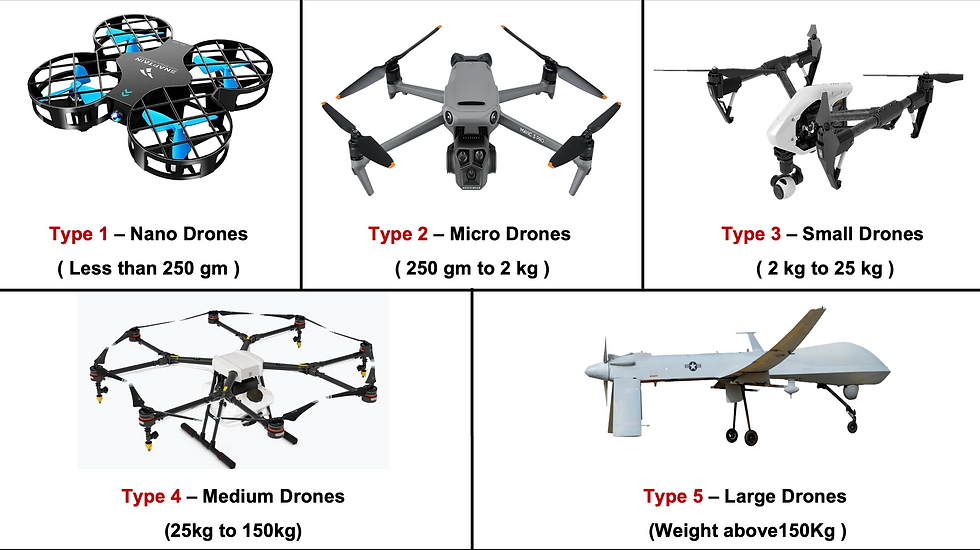
Category | Weight Range | Application & Use Case |
Nano | ≤ 250g | Toy drones, indoor flying, beginner training |
Micro | 250g – 2kg | Hobby flying, small photography drones |
Small | 2kg – 25kg | Commercial photography, mapping, agriculture |
Medium | 25kg – 150kg | Industrial inspections, cargo delivery |
Large | > 150kg | Heavy cargo transport, military operations |
💡 Fun Fact: Most student drones are in the Nano and Micro categories — safe, light, and easy to use.
Conclusion
Drones are more than just flying machines — they are a gateway to learning technology, engineering, and creativity. By understanding the different types of drones, from nano quadcopters for beginners to fixed-wing and VTOL drones for advanced applications, students can explore endless opportunities in STEM education and future careers.
Whether it’s mapping farmlands, capturing cinematic shots, rescuing people in emergencies, or simply learning the basics of flight, drones are shaping the way we live, work, and learn.
And the best part?
You don’t need expensive equipment or prior experience to start. 📌 Join our Free Drone L1 Course today and take your first step into the exciting world of drones — where fun meets future technology.


Comments